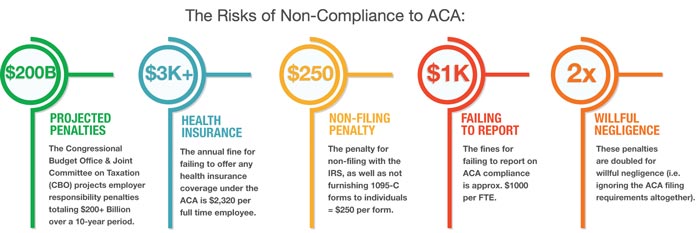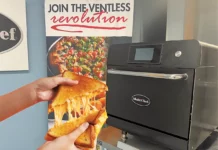
Article contributed by Valiant Solutions
Moving into a new year, it’s important to understand the complexities of operating a restaurant with respect to compliance laws. There are more regulations around the workforce and ensuring employees have protection in their workplace. This can be a benefit for both the employee and the employer, but comes with a risk to employers who are not aware.
Let’s look at 3 regulations that can impact your business (and a bonus fourth regulation that might impact you this year):
1. Affordable Care Act (ACA) Compliance: Obama Care Is Not Going Away (Yet)
All over the news earlier this year was a ruling by a federal judge in Texas, calling the Affordable Care Act (ACA) unconstitutional. Even as we write this, the current administration is seeking to repeal the ACA as well. While these decisions now open the entire healthcare program up for debate, there currently is no impact on businesses.
“First and foremost, this ruling has no immediate impact on the health insurance landscape”, says Todd Bellistri, President and CEO of August Benefits, a leading consulting firm and expert in ACA Compliance. “All provisions of the ACA, including the online marketplace, premium subsidies, employer reporting and IRS enforcement – remain the law of the land.”
Legal debate notwithstanding, for many businesses compliance to ACA is not usually top-of-mind – especially when you are busy running an operation on a daily basis. The majority of small business either didn’t meet the requirements for ACA, or failed to report – both can be problematic and can result in fines from the IRS. The reason for this? Many small businesses believe they are too small to be “noticed” or simply don’t have the resources and tools to report effectively. Even those companies that DO report, if they miss the proper calculations, deductions and itemization, they can STILL face fines.
So, how do companies solve this challenge of regulatory compliance?
The key is to incorporate ACA reporting directly into your payroll system. While your payroll system is the lifeblood of how your staff is paid, it needs to have a compliance component to it. Building a payroll system that allows you to generate ACA reports that will compile the payroll, check all the deductions, itemize the benefits paid, contributions, and provide you with a compliant report will take out the manual, error-prone efforts related to ACA compliance.
 2. FLSA Compliance and the Rising Minimum Wage
2. FLSA Compliance and the Rising Minimum Wage
The Fair Labor Standards Act includes regulations on Minimum Wage rates. In many States such as New York, the minimum wage is steadily rising. While a benefit for employees, this can impact a business in how it handles costs, and profits. Businesses don’t want to have to charge more for their products, but rising costs usually mean rising prices – which can impact customer loyalty and competitive pricing.
A lot of the challenges with meeting minimum wage is calculating the proper wage rates with tip credits to meet the minimum standard. With payroll management, the payroll automatically looks at the wage rate, the tip allowance, and ensures that the wage rates meet the minimum wage requirements.
Too often overlooked is regulatory compliance. Between the Department of Labor and the Internal Revenue Service, the Hospitality industry is one of the top most-scrutinized and cited industries when it comes to wage and tax compliance. While this is something many do not consider this a potential threat, more and more companies are cited for wage and tax fines.
Without having a system that connects the employee rates to the payroll, you run the risk of errors or failed entry of wages. This not only poses a risk to employees’ getting paid but can also run into compliance risks with failure to accurately record taxes or benefits. You want a system that provides you with the intelligent business rules to automatically run payroll against the current employee rates.
The biggest challenge becomes being able to accurately track the employee wage rates, taxes, and credits that need to be accounted for. Minimum wage changes, or properly calculating tip credits, overtime, and how this is taxed can be a complex process, and noncompliance to this can result in costs associated with time to process or failure to record wages properly, which can result in penalties you cannot afford.
Failure to report time with earnings can result in fines or penalties that you want to avoid in your operations.
3. Pay Stub Compliance: WPTA Compliance and How you can Mitigate Risk
As the market drives towards more transparency in employment wage protection and visibility, both State and Federal agencies are looking to drive more legislation on employer’s ability to communicate wage rates with their employees. In New York, the Wage Theft Protection Act (WTPA) has been driving for Pay Stub Compliance, which is creating challenges for companies in their Payroll Management operations.
With a focus on transparency, the WTPA Pay Stub Compliance is a directive to provide additional details on an employee’s pay Stub that clearly outlines the various elements that make up the total gross to net pay. While an important initiative for communicating clearly on the wages and deductions that make up the wage, this is proving a challenge for businesses in the hospitality industry, NY state in particular. The challenge isn’t in the concept of providing this detail, it is the mechanics on how an employer can complete this using their current Payroll Management System.
Some of the areas you want to consider with Pay Stub Compliance include (but not limited to):
- Blended Rates: An employee may work Front of House (FOH) and Back of House (BOH) during a given work week. The Fair Labor Standards Act (FLSA) require that all hours worked performed at two or more rates, overtime must be paid out at a blended overtime rate.
- Meal Allowances and Credits: Many organizations will provide a meal credit or allowance for staff, depending on their shift and their time worked. This is a deduction that needs to be shown on the pay stub in order to remain compliant.
- Overtime Rates: Companies that have employees incurring overtime not only must follow the guidelines on overtime pay rates, but also must accurately display what the overtime hours are, the overtime rate, and factor this – in detail – on the employees pay stub.
4. Bonus: Tip Pooling, and the debate on Compliance impact
While not yet a mandate, but a hotly debated topic is the concept of Tip Pooling. The idea is that rather than each individual employee receiving tips for their service, the entirety of tips for the evening are “pooled” and equally distributed amongst the entire staff, both in BOH and FOH. There are obviously many pros and cons to this method, and there is a lot of chatter in the market as to whether a law or regulation is even required.
Taking that aside, the real challenge becomes one of tracking and automating it. Even if you can establish a tip pooling program, the complexity of building in an intelligent payroll management system to split out the different tip credit rate and the pooling mechanisms becomes another set of challenges. As we begin to see more and more of the above regulations take their spotlight in the industry, be aware that this one may surface once again.
Mitigating Risks of Compliance Through Technology
There are many other components that add to the complexity of operating and running a service-based industry. When looking at it from a workforce operations perspective, the compliance element to operations can be daunting and seemingly overwhelming. When you consider the risks of non-compliance, companies certainly have to really pay attention to how they are paying employees, how they are communicating payment, and what options are offered to them for their well-being.
Trouble is, that without tools and technology to aid in the process, it can make operations such as these a near impossible task. You really want to guard yourself against the risks of compliance with a payroll management system that tracks wage rates, time worked, ACA compliance eligibility, and provides the intelligence and detail necessary to do the calculations for you in the background.
This way, you can reduce the compliance risks and focus on what matters – running a thriving and profitable business.























